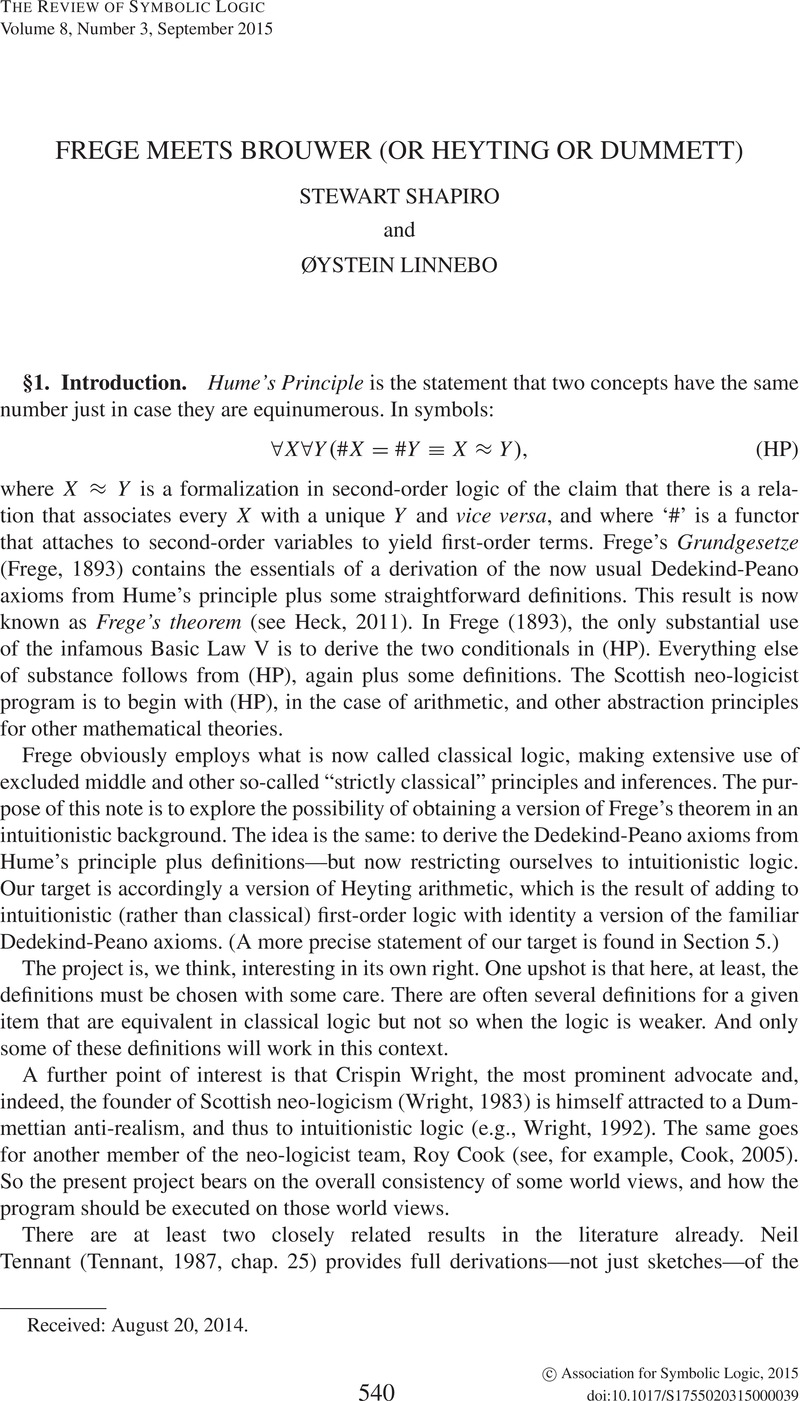Crossref Citations
This article has been cited by the following publications. This list is generated based on data provided by Crossref.
STAFFORD, WILL
2023.
THE POTENTIAL IN FREGE’S THEOREM.
The Review of Symbolic Logic,
Vol. 16,
Issue. 2,
p.
553.
Zanetti, Luca
and
Boccuni, Francesca
2025.
Abstractionism.



